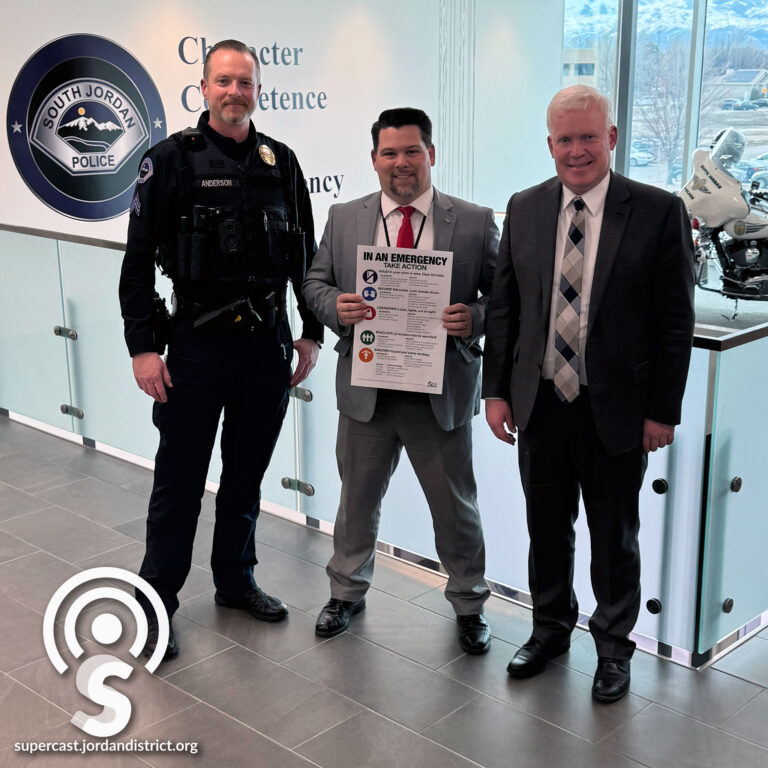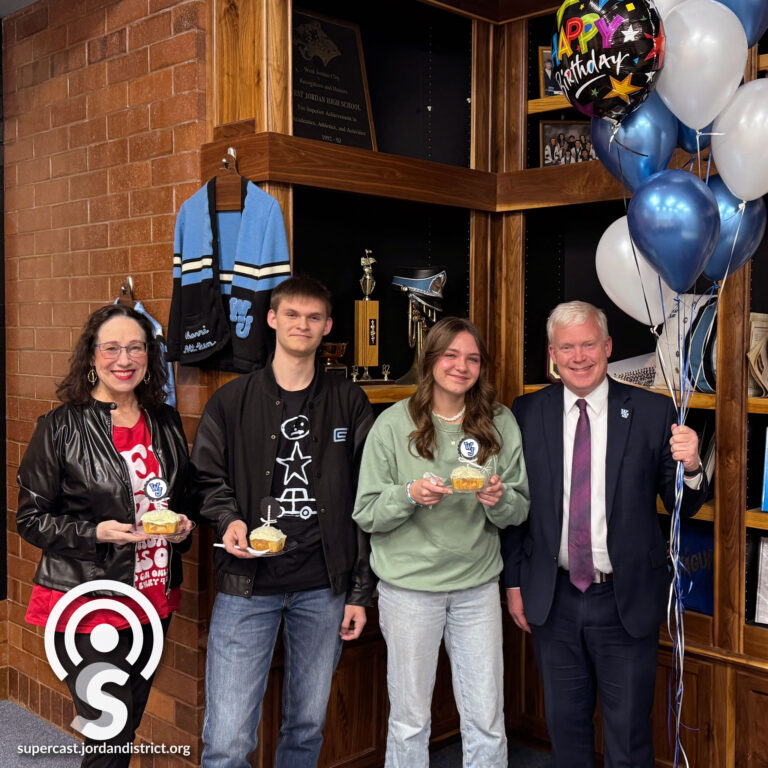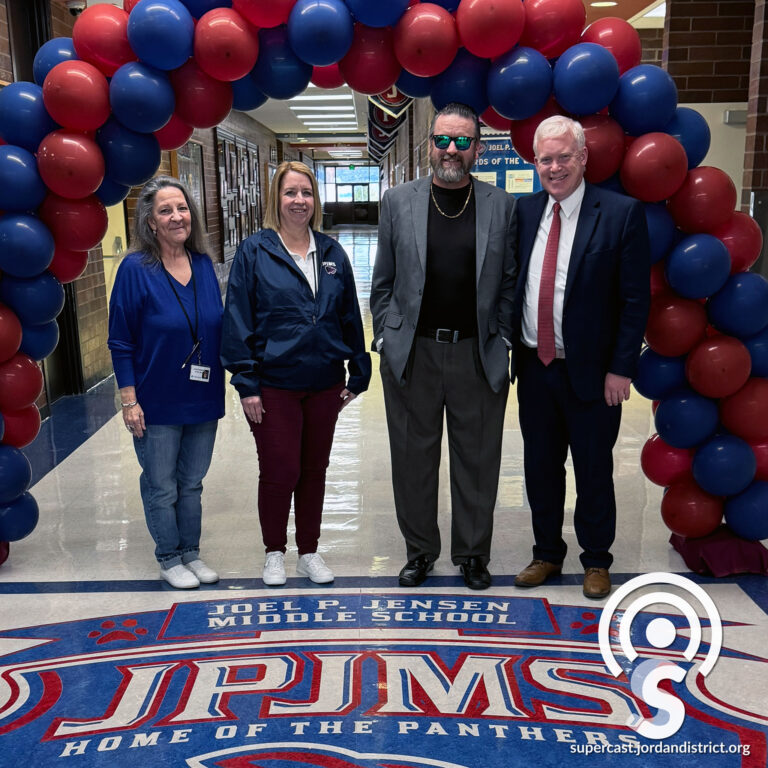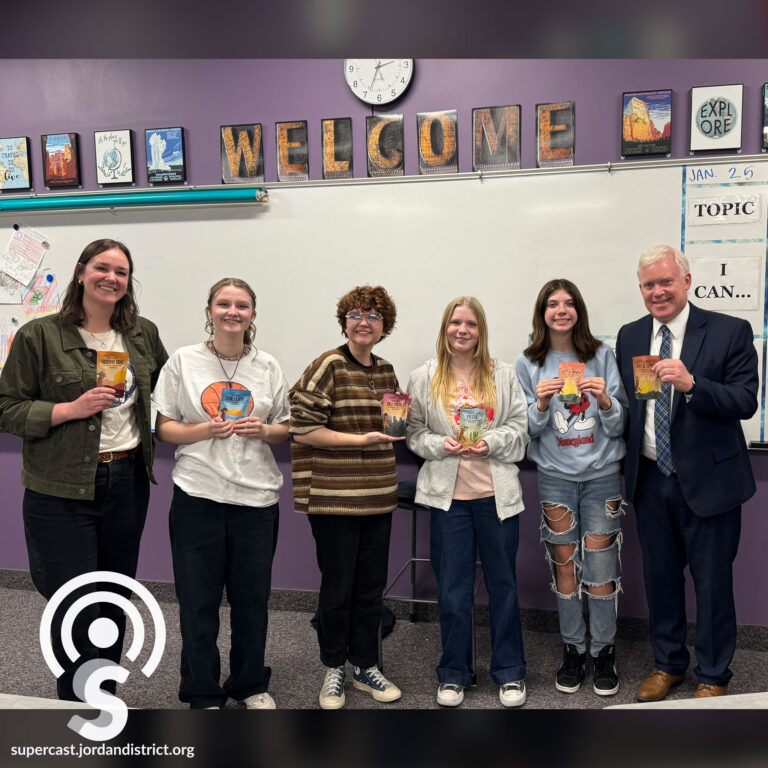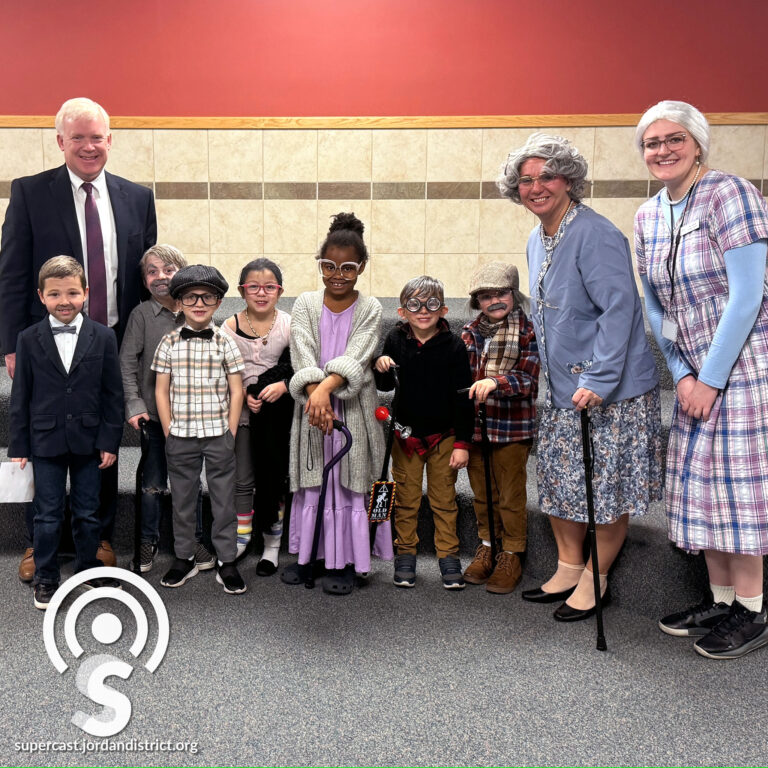It will help to keep everyone safe and informed in the event of an emergency in one of our schools or buildings. It’s called Standard Response Protocol or SRP and it provides consistent, clear, shared language, and actions for all students, staff, first responders, and parents. It is language that can be applied to any emergency situation.
On this episode of the Supercast, find out why state law now requires all school districts to adopt SRP and how knowing the language is essential to everyone for the sake of safety in our schools.
Audio Transcription
[Music]Anthony Godfrey:
Hello and welcome to the Supercast. I'm your host, Superintendent Anthony Godfrey. It will help keep everyone safe and informed in the event of an emergency in one of our schools. It's called Standard Response Protocol, or SRP, and it provides consistent and clear language and actions for all students, staff, first responders and parents. It is language that can be applied in any emergency situation.
On this episode of the Supercast, find out why SRP is now being used statewide and why knowing the language is essential to everyone to help keep our schools safe.
[Music]Today we are at the South Jordan City Public Safety Building to talk with School Safety Coordinator from Jordan School District, Matt Alvernaz, and Sergeant Eric Anderson, who oversees the school resource officers in our schools for South Jordan City. Gentlemen, thank you very much for taking time to talk with us about the new terminology and the new actions that are in place for schools to take in case of emergency.
One of the things that's exciting about this is that everyone in the state is on board now, and this is terminology that's going to mean the same action and means that we take the same action throughout the state, which is really going to help. But before we dive in, just give me a little introduction about yourself.
Matt Alvernaz:
So I'm Matt Alvernaz. I'm the School Safety Coordinator. Prior law enforcement of 14 years. Before that I did four years with the Army as a ranger in special operations, and now work with the Jordan School District. I was a school resource officer myself, so I do have experience in the schools as well, and it's been an enjoyable transition. And I'm now the trainer of trainers for the standard response protocols for Jordan School District.
Anthony Godfrey:
Okay, great.
Sergeant Eric Anderson:
As Anthony said, Sergeant Eric Anderson, I am with the South Jordan City Police Department. I've been with South Jordan for over 22 years. I actually joined in 2001 with every intention of leaving, and I never did.
Anthony Godfrey:
We're glad you didn’t.
Sergeant Eric Anderson:
Yes, no, it's been great here. I've worked in investigations- eight years in there, SWAT team 12 years. Like Anthony said, I now manage our SROs, and I'm a myriad of other things, but that's my primary responsibility.
Anthony Godfrey:
Tell me about the unique assignment, both of you, of being an SRO in a school as compared with being an officer in other roles.
Sergeant Eric Anderson:
There's a different mindset when you step into a school, mainly because you're working with the school staff, as opposed to just working as a law enforcement officer. What that typically means is when something happens in the school that requires police intervention, you really have to kind of put on the brakes before any decisions move forward.
And so an example I would give you is vapes. An officer walks into a bathroom, sees some kids using a vape, and they confiscate the vape, take the kids to the school administration, the principal, the VP, and they just discuss what to do with that. You know, does the kid have prior incidents involving the same crime, things of that nature, and then they make a determination on where to go from there.
That's different from the patrol aspect. On patrol, you would just most likely issue a citation for a tobacco violation or THC violation of that. So that's really the main difference is you're taking that partnership with the district, with the administration, to decide on what's best for that kid.
Matt Alvernaz:
Police in the schools has become the earliest form of proactive policing. Really getting ahead of decision-making before crimes occur years in the future. To help these kids have a better relationship with law enforcement and to help make better decisions in education and having that exposure there.
So the degree of discretion while you're in the schools kind of broadens. It's not so much black and white. Patrol guys have discretion as well, but it's more, there's the enforcement mindset to it. This is more of a development and correction mindset. Like he said, you know, pump the brakes and take a different approach because these are kids, and we want them to be successful. So we're going to proactively partner schools with law enforcement to help these kids make good decisions and become better people.
Anthony Godfrey:
I agree with all that, and to me a key component is the relationship. The relationship that you develop with students means actually you get information about what kids need and what's happening in the school so you can prevent issues and solve problems in advance. And that's where I've seen it be really effective is I'm impressed with the level of relationship officers are able to develop with students and how helpful that is in creating a safe and productive and positive environment for everyone.
To me an essential component of keeping schools safe is a close working relationship with our municipalities and police departments in particular. Tell us about the relationship between Jordan District and South Jordan Police from your perspective.
Sergeant Eric Anderson:
So yeah, no, I agree 100% with that. You know, going back to working with Lance Everill, who you replaced, Matt. So yeah, even from that, just that communication is huge. The training aspects are huge. Being able to be on the same page as far as all this goes when it comes down to terminology and how each school is going to react to an incident, whether it be minor or an urgent emergency. So it's really important that we're all on the same page.
Matt Alvernaz:
Yeah, all this training and everything we're doing is very much a collaborative effort. When I'm trying to conduct trainings or put things together for safety concerns, I talk to the law enforcement agencies, our agencies we're here with, especially South Jordan. For example, we have a meeting later today. They're going to help me vet some ideas that we have on different safety options. So that working relationship is huge to keep the communication going with the public as well. Help to build trust with the students in the community, with us as education and in law enforcement.
It's been an ongoing effort, but for me, moving into it, I tell you, it's been pretty seamless. This relationship has been here and it's been strong.
Anthony Godfrey:
Well, you've done a tremendous job, and South Jordan has always been a wonderful partner. So it's really great to have your officers in our schools, and I think they're a much better place for it. Much safer and a very positive, productive environment as a result.
Before we go through the five protocols, I just want to mention at the top of the poster, and you'll see this on the website if you follow the link in the show notes, it says, "In an emergency, take action." That's the main thing. People get kind of paralyzed when an emergency comes or when there's an announcement or a drill. So we are going to be continuing to drill these in our schools to be sure that people are ready to take action in case of an emergency.
Matt Alvernaz:
Absolutely. I was going to say that we are drilling. We've increased the amount of drilling we're doing. We're doing monthly trainings for the schools on each of these drills, and then the schools are then turning around and implementing those into it. So we can expect that communication home for parents to hear about these things. Kids coming home saying, "Hey, we did this new drill. We've never heard of it." And so an idea of each month as we do this, it becomes standard, as it's called, and we know what to do, and new parents know what to expect, and the kids know what to expect, and it continues to progress from there.
Sergeant Eric Anderson:
I'm going to double down on what you said, Anthony, of freezing. I mean, if you think of the three Fs, fight, flight, or freeze, freeze is absolutely the worst thing you can do. When you do nothing, that's when things can exponentially get worse. So I'm just going to double down on what you said there.
Anthony Godfrey:
So the fact that these are actions and protocols and you do something under each of these is important to remember.
Sergeant Eric Anderson:
Take action. Take action is a great explanative at the top of the sign.
Anthony Godfrey:
Stay with us when we come back more about SRP, our standard response protocol.
Break:
Hello, I'm Sandy Riesgraf, Director of Communications for Jordan School District, and we want to invite you to connect with us. So many exciting things are happening in your child's school, your neighbor's school, in every school here, every day. Don't miss out on following the fun or simply staying informed when there's important information we need to share. Join us at jordandistrict.org, or follow us on Facebook, Twitter, and Instagram @jordandistrict. We can't wait to connect.
Anthony Godfrey:
Now let's talk about the standard response protocol. This is a statewide list of actions we take in case of emergency and new terminology associated with those actions. There are five protocols, hold, secure, lockdown, evacuate, and shelter. Let's start with hold. Tell me what hold means and when we would use that.
Matt Alvernaz:
Hold is a new one that's been added. It's something that's going to be unfamiliar to a lot of students and parents at home. It's basically just calling a time-out. Any time that the school needs to say, "Hey, we don't care what the bell's about to ring or what's about to happen, we're just going to tell everybody to stay in your class, stay in your area, just hold."
Maybe there's debris or something in the hallway, you know, a pipe breaks, and we need to keep students away from that. Maybe there's a medical emergency, we need to keep the hallways clear for responders. Or any other reason that the school decides, "Hey, you know what? Let's just call a time-out and keep everybody in class." It could last five minutes, it could be a little bit longer, but typically it's not something that's going to be prolonged, but it's just a good tool that can be used in conjunction with any of these other response options as well.
Anthony Godfrey:
So under Hold, and each protocol has a list of actions for students and for adults. Students clear the hallways, and remain in their room until the all-clear is announced. They continue with business as usual, and adults are responsible to close and lock the door, account for students and adults, and also continue with business as usual.
Matt Alvernaz:
Correct, and the big difference on this is it's not like an emergency where there's an attacker or a threat that's actively coming after people. So students can be let in and out of these locked doors. They can be, you know, it's low-key. It's more just like, "Hey, we're just dealing with something." Everybody just kind of pause for a second.
Anthony Godfrey:
Let's talk about secure.
Matt Alvernaz:
Yeah, so secure has been around, but we've known it as lockout. We've changed that terminology because lockout gets confused with lockdown. Lockdown's a little bit more intense of a protocol and response so we've seen inadvertent panic, we've seen confusion. What exactly is lockout? Or people, you know, slip of the tongue, meaning to say lockout but saying lockdown.
Anthony Godfrey:
Okay.
Matt Alvernaz:
So we've changed that to secure. Secure means that there's a threat or a hazard of some nature outside the building. We're securing the inside. We're just going to lock the exterior doors and windows. We're going to keep everything out. We're going to modify the access. So depending on what the reason is, maybe there's a wild animal outside. We want to bring the students in. We want to lock the outside doors. We don't want this animal to get in. We don't want the students to get hurt. As maybe a parent doesn't know, they come to the door. We can modify that access and allow them in.
Maybe we do have information of police activity nearby that's unrelated to the school, but something that could pose a hazard or a threat to the school potentially. We're just going to, again, we're going to lock it down. We're going to secure it, and we're not going to let anybody in because we don't know what that threat is until we have better communication with law enforcement. Which, again, goes back to our partnership because we typically know exactly what's going on as we need to know it.
Anthony Godfrey:
And secure is often going to be put in place just as a precaution. If there's police activity anywhere near a school, “Hey, just in case, let's keep kids inside.” It doesn't necessarily mean that there's a serious incident where you're worried about harm to students, it's just a precaution.
Sergeant Eric Anderson:
That's correct. The best example I gave you was actually not too long ago. We had a person flee from us in a vehicle near Bingham High School, and so the SRO at that school overheard this on the radio. At the time, we were still using the old lockdown/lockout terminology. He asked them to go into lockout mode. They actually went into lockdown mode, exactly what Matt said. There was some confusion there, which scared kids, which ended up resulting in a lot of texts going out to parents. But it was really just to make sure if that vehicle that was fleeing from law enforcement had stopped, crashed, or anything near the school, that individual or individuals wouldn't have access to the school.
Anthony Godfrey:
And that's a good example of why secure is a good term in place of previous lockout. So, secure, get inside, lock outside doors for students. The instructions are return to inside of the building, continue with business as usual, and for adults, bring everyone indoors, lock the outside doors, increase situational awareness, and account for students and adults. So, that's hold and secure now. Now we move to lockdown.
Matt Alvernaz:
Lockdown is definitely, we've progressed now. There's a threat inside the building, or at least we believe there to be a threat inside the building. In this case, we don't need to worry about securing the outside, because we already believe the threat is inside. So, we're going to lock all the doors inside. We're going to lock and secure there. We're going to do as it says here, "locks lights out of sight." And that's huge. We need to make sure that students know to be aware that they need to darken and silence their cell phones.
Now, we're not trying to prevent communication at home, because we do actually encourage that. We want that. But we want it to be in a way that's safe, and that we can keep cell towers clear enough for those who need to use it, emergency responders and whatnot. And then wherever it might be, whatever room you might be in or near, you need to go in there and lockdown, stay quiet. And this will be followed by an evacuation, which will be police-led in a real situation, room by room.
Sergeant Eric Anderson:
So, and to add to that, I think understanding that this is going to be a lengthy period of time.
If we go into a lockdown with an actual incident occurring, the time it's going to take for law enforcement to go through that school, whether it's an elementary school or high school, it's going to take quite a while. They're going to be meticulous. The only time that that changes and goes to a dynamic type of response is when there's something actively occurring, and the officers that have responded can hear stuff that's occurring. And they're going to run and rush to that situation. When there's nothing going on it's going to be methodical, and it's going to take a lot of time. So just understand that it's not going to be quick.
Anthony Godfrey:
And it's also going to be rare. It's only going to be in extreme circumstances that we go into a lockdown. Whereas, because of what you referenced earlier, I think that happened a lot more frequently because of the confusion about a lockdown or a lockout.
So lockdown is “locks, lights, out of sight.” For students, they move away from sight, maintain silence, do not open the door. Adults recover students from the hallway if possible, lock the classroom door, turn out the lights, move away from sight, maintain silence, don't open the door. And prepare to evade or defend if we're in a serious situation.
Matt Alvernaz:
Correct. Yeah, we teach the avoid, deny, defend. And that was something that was developed out of Texas with the alert. And yeah, so you have those options to add to it. So as something's unfolding in front of you, you have the options to avoid if you can. Deny access is what we're looking for. And in a worst-case scenario, like you said, defend. We have the right to survive. Everybody has the right to life and survive. And there's no need to not take action. And if that means defend, you defend.
Anthony Godfrey:
It does take a while, but when that lockdown is over, what is that going to look like? What does the end of a lockdown look like?
Matt Alvernaz:
Yeah, so like I said, it's going to be like a police-led evacuation. Now, we don't release lockdowns through a PA and that's through safety precautions. We don't want false releases given by someone else. We want to make sure that everybody is who they are and where they are supposed to be.
So as we go through the building, police will lead it, and they will unlock every classroom one by one. They will give commands. And most of the time, those commands are going to be stern of making sure your hands are visible, making sure you're following directions. They're going to guide you out of the classroom and out into the evacuation area. So that one by one, the evacuation will begin. And like I said, it'll be slow, methodical, and patience is definitely going to be needed for this.
Anthony Godfrey:
Okay. The next protocol is evacuate. Talk about evacuate.
Matt Alvarnez:
Evacuate is something that's been around for a long time. We've been doing this for fire drills. We've been doing it with everything we have, you know, earthquake drills or what it might be.
Evacuate is just that. We're going in a calm manner. We're not like a kindergarten cop all rushing out and always carrying several students in his arms and screaming. But, you know, they do the calm manner depending on why we're evacuating. Whether it's a lockdown, it'll be a police-led evacuation. It'll be slow and methodical. But the typical evacuation is going to be, you know, a fire alarm going off. We're going to gather our safety equipment. Every classroom has a tactical emergency care kit and other things that would be needed. And we're going to get to a safe area. Whether that's the primary or secondary, these things are predetermined or predesignated. Maybe the primary area is blocked off by something. So we need to go to the secondary. And so this is something that's been around a long time. We're pretty good at evacuating.
Anthony Godfrey:
We've done a lot of evacuation drills over the years. So for students, leave your things behind if you're required to. If possible, bring your phone. Follow instructions. And for adults, lead students to the evacuation location. Account for students and adults and notify authorities if anyone is missing, injured, or if you have extra students that you grabbed who happen to be close by in the hall or whatever else so we can account for everybody quickly. And as indicated here, sometimes there may be an alternate location depending on the reason for the evacuation. Our last one is shelter. Talk about what shelter means under these new protocols.
Matt Alvarnez:
So shelter is a response to a hazard or some sort of natural disaster. Whether it be weather or a chemical spill, or something of that nature. And this is where we're going to need to stay inside. We're not worried about maintaining access from people or threats of that kind. It's more of like if noxious gases, fumes, we want to keep the kids inside, keep them safe, come away from the windows or blizards, weather situations. We want to be able to seal the windows, turn off the ventilation system, and get to a safe area.
We might be there for a while because it is shelter. And this is where the kids will be housed, where everybody in there will be housed, and kept safe until we have a new plan to get everybody reunited at home and safe where they need to be.
Anthony Godfrey:
And at any rate, we have some very specific plans in each school if we do need to shelter for a longer period of time. So just to sum up, there's hold where you stay in your room, secure where you lock the outside doors, lockdown where you lock all of the internal doors and you're out of sight and the lights are out, evacuate which is the traditional fire drill where you're outside of the building, and shelter where you kind of hunker down based on some natural disasters or some unnatural disasters with maybe a hazmat situation.
So that's the list of protocols, and it's not just that we have this poster in every classroom, but we are training staff in every building. We're drilling on this and we're going to continue to train on this, and our municipalities are trained on these same protocols as well.
Sergeant Eric Anderson:
Yes, we disseminated this information after going to Matt's training not too long ago to our entire patrol staff, our investigations unit, every sworn officer in the department was South Jordan City Police Department. We've all been educated on this. It's been part of our morning briefings, afternoon briefings, graveyard briefings. So this information's really been mixed around the entire department.
Anthony Godfrey:
Matt, anything else to add?
Matt Alvernaz:
Yeah, one thing that I can't stress enough is the level of communication. The school district is going to do everything we can to get information out as quickly as possible as accurately as possible. Students don't have that responsibility. They have text messages. They have social media. They have all this ability to put out any rumor they hear. And for us to move at the speed of rumor is irresponsible and dangerous.
We do not try to withhold any information by any means. We want to get that as quickly as possible because our parents are another huge partner to this community. The partnership that we have with the police department, us, and you guys are very much involved. But I can't stress enough to please understand that information you might be hearing from students, which you most likely will hear first, is more than likely inaccurate. So we will get that information out as quickly as possible when it's safe and responsible to do so.
Anthony Godfrey:
Well, thank you both for taking the time today to talk with me about these new protocols. I really feel great about the level of clarity. I'm excited to continue the training and really get us all on the same page. We'll keep preparing for the worst and expecting the best. And just thank you both for the roles you play in keeping our students and our schools safe.
Matt Alvernaz:
Thank you.
Sergeant Eric Anderson:
Yeah, thank you for having me.
Thanks for joining us on another episode of the Supercast. Remember, education is the most important thing you will do today. We'll see you out there.
[MUSIC PLAYING]
